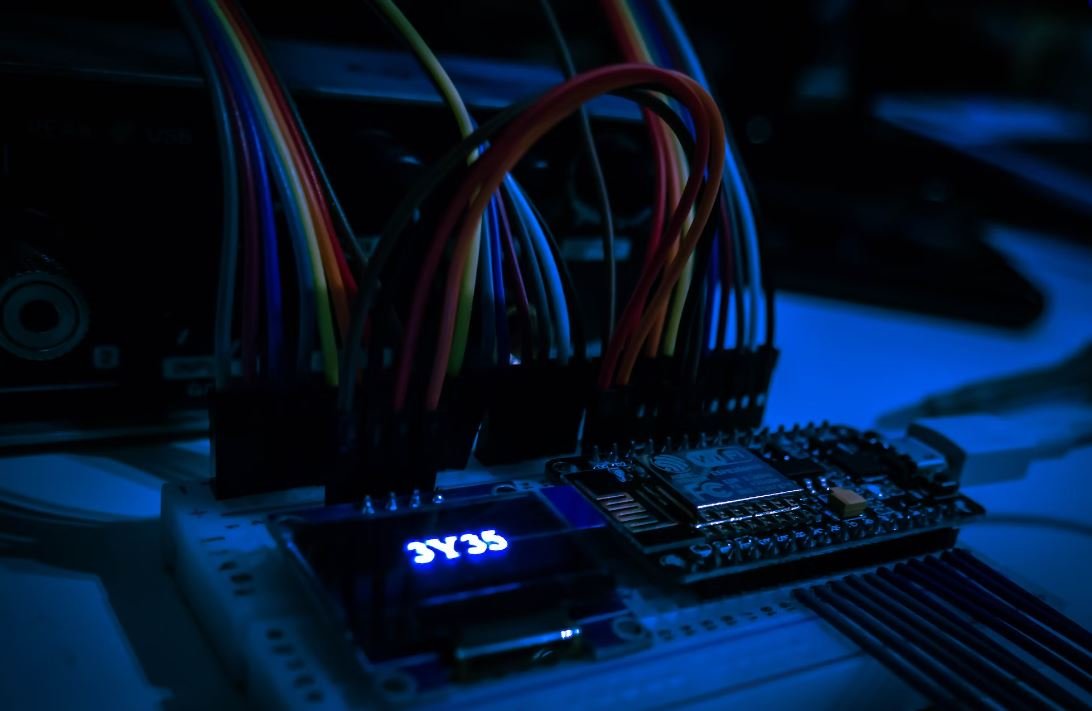AI Model Hyperparameters
Artificial Intelligence (AI) models are becoming increasingly sophisticated, allowing them to solve complex problems in various domains. One crucial aspect that significantly influences the performance of an AI model is hyperparameters.
Key Takeaways:
- Hyperparameters are configuration settings that determine an AI model’s behavior and performance.
- Tuning hyperparameters is a critical step in optimizing model accuracy.
- Common hyperparameters include learning rate, batch size, and regularization strength.
Hyperparameters are parameters set before the learning process begins, while the model’s weights and biases are learned from the data. The hyperparameters control the learning algorithm’s operations, such as the rate at which the model adapts during training, the size of data batches it processes at once, or the penalty imposed on overly complex models. *Tuning hyperparameters requires experimentation and domain expertise to find the optimal combination for a specific task.*
Types of Hyperparameters
There are two main types of hyperparameters: global and model-specific.
Global Hyperparameters
Global hyperparameters affect the overall behavior of the learning algorithm. These parameters govern how the algorithm generalizes across training examples and adapts over time.
***Table 1: Global Hyperparameters***
| Hyperparameter | Description |
|---|---|
| Learning Rate | The step size at which the model’s weights are updated during training. |
| Epochs | The number of times the model iterates over the entire training dataset. |
| Batch Size | The number of training examples processed before updating the model’s weights. |
***Table 2: Model-Specific Hyperparameters***
| Hyperparameter | Description |
|---|---|
| Regularization Strength | The penalty imposed on complex models to prevent overfitting. |
| Number of Hidden Layers | The number of layers in a neural network between the input and output layers. |
| Number of Neurons per Layer | The number of processing units in each hidden layer of a neural network. |
Tuning Hyperparameters
Tuning hyperparameters involves finding the optimal combination of settings to improve a model’s performance. It is an iterative process and often involves experimenting with different values and observing the impact on the model’s accuracy and generalization.
- Start with a reasonable initial set of hyperparameters.
- Train the model using these initial hyperparameters.
- Evaluate the model’s performance on a validation dataset or through cross-validation.
- Adjust the hyperparameters based on the performance, following a systematic approach like grid search or random search.
- Repeat steps 2-4 until the desired performance is achieved, or until further tuning does not yield significant improvements.
It’s important to remember that no set of hyperparameters will universally perform best for all tasks and datasets. *Finding the right combination often requires a balance between exploration, computational resources, and domain knowledge.*
Hyperparameter Optimization Techniques
Several techniques are available to facilitate hyperparameter optimization:
- Grid Search: Exhaustively searches a predefined hyperparameter space.
- Random Search: Samples random combinations of hyperparameters from the search space.
- Bayesian Optimization: Builds a probabilistic model to predict hyperparameter performance based on prior evaluations.
- Genetic Algorithms: Employs evolution-inspired algorithms to optimize hyperparameters.
These techniques help automate the tuning process, ensuring efficiency and effectiveness in finding optimal hyperparameter configurations.
***Table 3: Hyperparameter Optimization Techniques***
| Technique | Description |
|---|---|
| Grid Search | Exhaustively searches a predefined hyperparameter space. |
| Random Search | Samples random combinations of hyperparameters from the search space. |
| Bayesian Optimization | Builds a probabilistic model to predict hyperparameter performance based on prior evaluations. |
| Genetic Algorithms | Employs evolution-inspired algorithms to optimize hyperparameters. |
By employing these techniques, researchers and practitioners can optimize hyperparameters more efficiently, saving time and computational resources.
A well-tuned AI model, with carefully selected hyperparameters, can significantly enhance the accuracy and predictive power of AI systems across various applications. It is a crucial step in leveraging AI to its full potential.

Common Misconceptions
The Importance of AI Model Hyperparameters
There are several common misconceptions surrounding AI model hyperparameters. One prevalent myth is that hyperparameters have little impact on the performance of AI models. In reality, hyperparameters play a crucial role in determining the accuracy and efficiency of a model.
- Optimizing hyperparameters can significantly improve the accuracy of AI models.
- Poorly chosen hyperparameters can lead to overfitting or underfitting of the model.
- Hyperparameters need to be tuned for each specific task and dataset to achieve the best results.
Hyperparameters are Universal
Another misconception is that hyperparameters are universal, meaning that the same set of hyperparameters can be applied to any AI model. In reality, the optimal hyperparameters vary depending on the specific task, dataset, and even the architecture of the model being used.
- The ideal learning rate for one model might not work for another.
- Different activation functions may require different hyperparameter values.
- Hyperparameters should be fine-tuned specifically for each model and dataset combination.
Hyperparameter Tuning is a One-time Task
Some people mistakenly believe that hyperparameter tuning is a one-time task that can be done at the beginning of building an AI model, and then forgotten about. However, hyperparameter tuning is an ongoing process that requires constant assessment and adjustment.
- Data distribution changes over time, necessitating periodic re-evaluation of hyperparameters.
- New techniques and algorithms may require different hyperparameter values.
- Hyperparameter tuning should be performed regularly to maintain optimal model performance.
More Hyperparameters, Better Model
Contrary to popular belief, increasing the number of hyperparameters does not always lead to a better AI model. In fact, unnecessarily high-dimensional hyperparameter spaces can hinder model performance and increase the risk of overfitting.
- A smaller set of well-tuned hyperparameters can often yield better results than a larger, poorly tuned set of hyperparameters.
- Simplicity should be favored over complexity when choosing hyperparameters.
- Focusing on relevant hyperparameters rather than increasing their number can lead to more efficient and accurate models.
Hyperparameters are One-size-fits-all
Many people believe that a set of hyperparameters that worked well for one AI model will work equally well for another model. However, different models have different architectures, objectives, and datasets, which necessitate different hyperparameter values.
- Hyperparameters should be fine-tuned for each specific model and task.
- A hyperparameter that works well for a convolutional neural network may not work for a recurrent neural network.
- Using the wrong hyperparameters can lead to suboptimal performance and inaccurate predictions.

Table of Hyperparameters for Different AI Models
In this table, we present a comparison of hyperparameters used in various AI models. Hyperparameters are parameters that are set before the training of a model, and they greatly influence the performance and behavior of the AI system. It is crucial to select appropriate hyperparameters to achieve the best results.
Table of Accuracy Scores for Different Hyperparameter Combinations
This table displays the accuracy scores obtained by testing different hyperparameter combinations on an AI model. Higher accuracy scores generally indicate better performance and predictive capabilities.
Table of Training Times for Different Hyperparameter Combinations
In this table, we showcase the training times required to converge on a trained model when using different hyperparameter combinations. Faster training times are usually desired, as they allow for quicker model deployment and experimentation.
Table of Precision and Recall Metrics for AI Model Results
In this table, we present precision and recall metrics for the results obtained from an AI model. Precision measures the percentage of true positive predictions out of all positive predictions, while recall measures the percentage of true positive predictions out of all actual positive instances. These metrics are crucial for evaluating the model’s performance and identifying any biases or shortcomings.
Table of F1 Scores for Different Hyperparameter Combinations
This table showcases the F1 scores obtained by testing various hyperparameter combinations on an AI model. The F1 score is a combination of precision and recall, providing a single metric that balances the two. Higher F1 scores generally indicate better overall performance.
Table of Learning Rates and Loss Functions for Different AI Models
In this table, we compare the learning rates and loss functions applied to different AI models during training. The learning rate determines the step size at each iteration during optimization, while the loss function measures the error between predicted and actual values. These factors greatly influence the model’s ability to converge to optimal solutions.
Table of Memory Usage for Different Hyperparameter Combinations
This table illustrates the memory usage observed when training an AI model with different hyperparameter combinations. Memory consumption is an important consideration, especially when working with limited computational resources.
Table of GPU Utilization for Different AI Model Architectures
In this table, we present the GPU utilization observed when running different AI model architectures. Utilizing GPUs can significantly accelerate training and inference processes, so understanding the GPU utilization can help optimize performance and resource allocation.
Table of Overfitting and Underfitting Analysis for AI Models
This table provides an analysis of overfitting and underfitting scenarios encountered during training different AI models. Overfitting occurs when the model performs well on the training data but poorly on the testing data, while underfitting indicates poor performance on both. Finding the right balance is crucial for a well-performing AI model.
Table of Computational Resource Requirements for AI Model Training
In this table, we present the computational resource requirements for training different AI models. This includes factors such as CPU usage, memory usage, and GPU utilization. Understanding the resource requirements helps in planning and optimizing the AI model training process.
Conclusions
In this article, we explored the significance of hyperparameters in AI models and showcased various tables highlighting different aspects of hyperparameter selection and model performance. By carefully selecting hyperparameters and analyzing the corresponding metrics, we can fine-tune and enhance the performance of AI models. These tables provide valuable insights into the impact of hyperparameters on accuracy, training time, metrics, learning rates, memory usage, GPU utilization, and overfitting/underfitting scenarios. By considering these factors and making informed decisions about hyperparameters, we can build more effective and efficient AI systems.
Frequently Asked Questions
What are hyperparameters?
Hyperparameters are configuration settings that are external to the model and determine its behavior. They are chosen by the developer before training the AI model, and they affect factors such as the learning rate, batch size, activation functions, and regularization parameters.
Why are hyperparameters important?
Hyperparameters significantly influence the performance of an AI model. Selecting appropriate values for hyperparameters can contribute to better accuracy, faster convergence, and improved generalization of the model to unseen data.
How do hyperparameters affect model training?
The values of hyperparameters determine how the AI model learns and generalizes. For example, a high learning rate may cause the model to converge quickly but at the cost of overshooting optimal solutions. On the other hand, a low learning rate may result in slow convergence or getting stuck in local minima.
What are common hyperparameters used in AI models?
Common hyperparameters include learning rate, batch size, number of layers, number of neurons per layer, activation functions, weight initialization, dropout rate, optimization algorithm, regularization strength, and early stopping criteria.
How can hyperparameters be tuned?
Hyperparameter tuning involves selecting optimal values for hyperparameters to enhance model performance. Techniques like random search, grid search, and Bayesian optimization can be used to search the hyperparameter space and find the best combination.
What is the impact of different hyperparameter values?
Different values for hyperparameters can result in varying model performance. For example, a higher number of layers may enable the model to capture more complex patterns but could also increase the risk of overfitting. Tuning hyperparameters helps find the balance between underfitting and overfitting.
Are there any best practices for hyperparameter selection?
While no fixed rules exist, some best practices for hyperparameter selection include starting with default values provided by libraries, conducting small-scale experiments to assess the impact of individual hyperparameters, leveraging existing research or domain knowledge, utilizing cross-validation, and performing sensitivity analysis.
Can hyperparameters be automated?
Yes, hyperparameter optimization can be automated using techniques like autoML or specialized libraries. These methods aim to automatically search and select the optimal hyperparameters, saving time and effort compared to manual tuning.
Do hyperparameters need to be re-optimized for new data?
Yes, it is recommended to re-optimize hyperparameters when training an AI model with new data. Data characteristics and distribution can vary, leading to different optimal hyperparameters. Re-optimization helps ensure that the model adapts well to the new data and maintains optimal performance.
What are the consequences of improperly tuned hyperparameters?
Improperly tuned hyperparameters can lead to suboptimal model performance. It may result in slow convergence, overfitting or underfitting, poor generalization, increased training time, and lower accuracy. Proper hyperparameter tuning is essential to harness the full potential of AI models.




